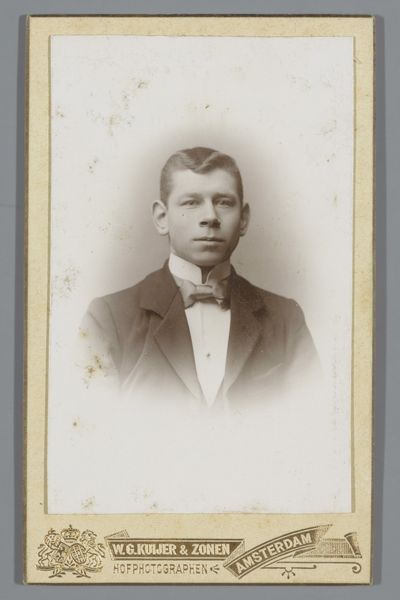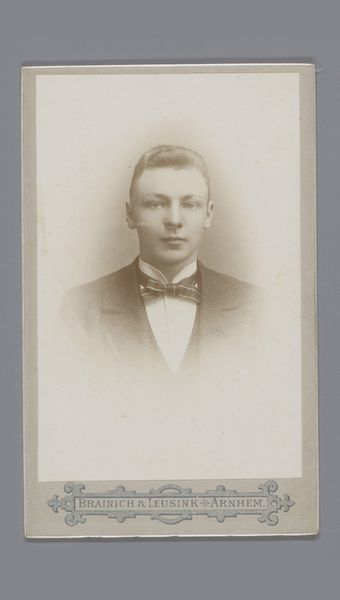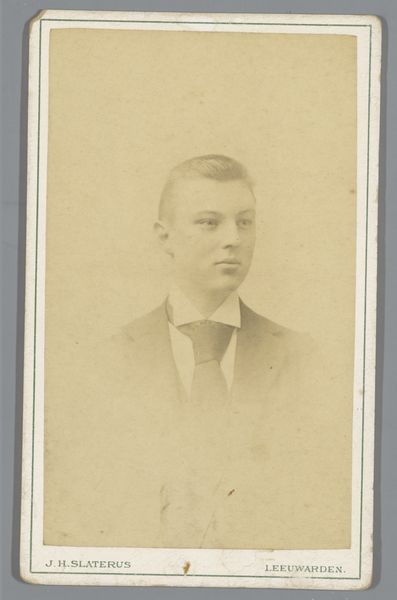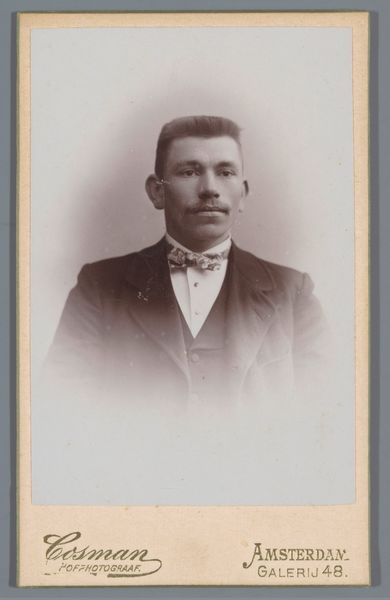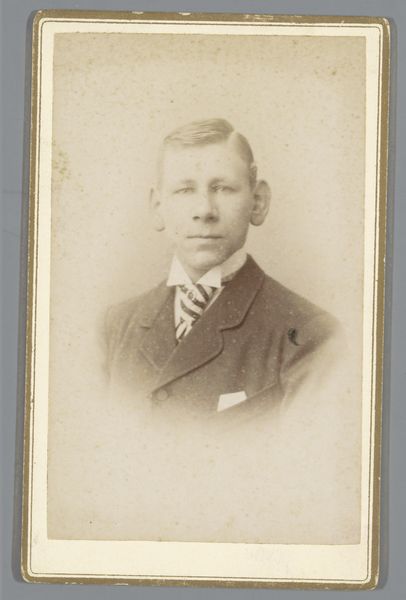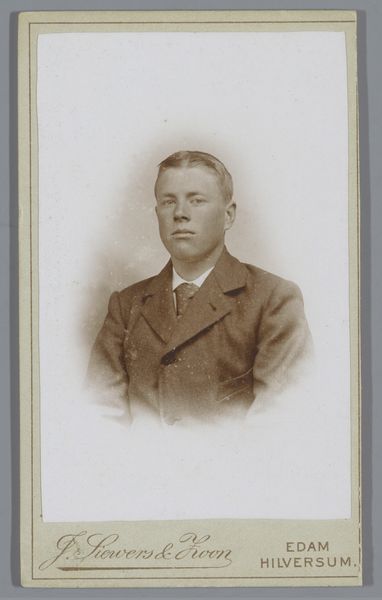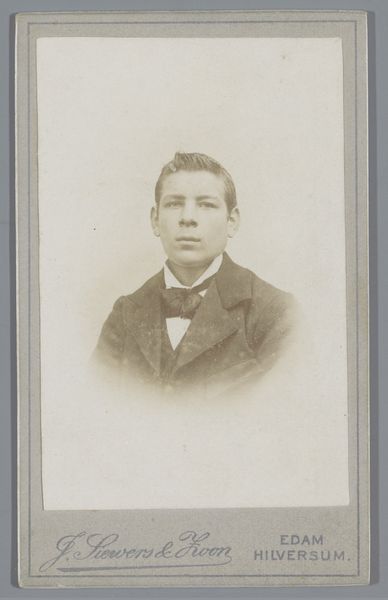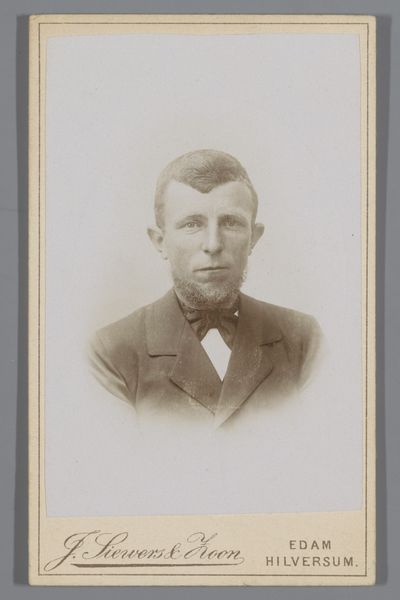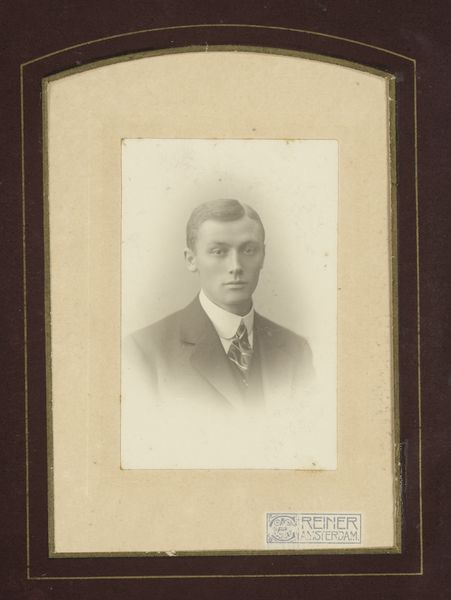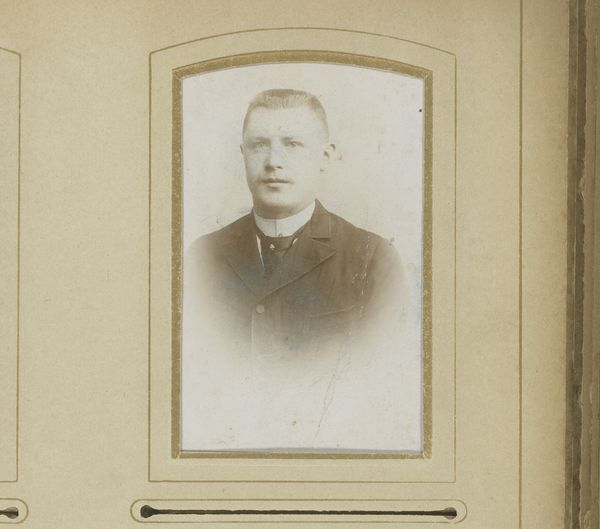
photography, gelatin-silver-print
#
portrait
#
still-life-photography
#
photography
#
gelatin-silver-print
#
modernism
#
watercolor
#
realism
Dimensions: length 106 mm, width 65 mm
Copyright: Rijks Museum: Open Domain
Editor: Here we have a gelatin silver print entitled "Portret van een onbekende man" made sometime between 1890 and 1918 by J. Siewers & Zoon. It feels very staged, like a standard portrait, but I’m struck by how the gelatin silver process makes the man appear almost… spectral. What's your take on this, considering its materiality? Curator: Considering it was made using gelatin silver print, we should focus on the social context behind the making of such a photograph. This process marks an important shift in photographic reproduction. No longer beholden to the older processes, mass production methods meant images like these became much more accessible to the emerging middle class. Who did making these portraits serve? Who were the owners of the firm "J. Siewers & Zoon", and who were the labourers in this context? Editor: That's a very different angle. So, it's less about the individual in the photo and more about the industrialization of image making? Curator: Precisely! It asks us to consider labor practices, industrial scale image making, and consumption patterns of the turn of the century, doesn't it? And consider what was included in this piece. A man, likely middle class given the style of clothing he could purchase, dressed up in clothing manufactured through exploitation in factories elsewhere, buying this print produced on gelatin derived as a by-product from the meat industry to further display his status and position. What does that tell us about value and social relations? Editor: Wow, I never thought about all that! So the very *stuff* of the artwork, from the gelatin to his clothing to the final photographic paper, all point to larger systems of labor and class… Curator: Exactly! It’s a photograph *of* something, sure, but more importantly, it’s *made of* and *because of* something very specific. That production is just as important, or more, than the aesthetic image. Editor: I'll definitely look at photographs differently now! I'll be thinking about the supply chains. Curator: Indeed. Hopefully, thinking this way can open up art historical understanding as it can provide great insights into larger society itself.
Comments
No comments
Be the first to comment and join the conversation on the ultimate creative platform.
